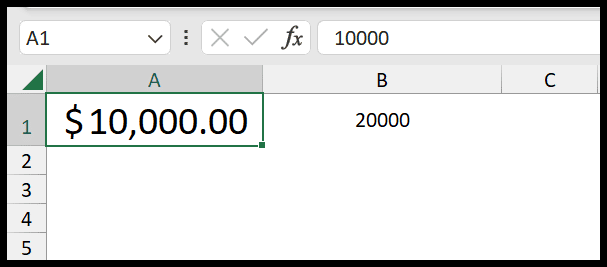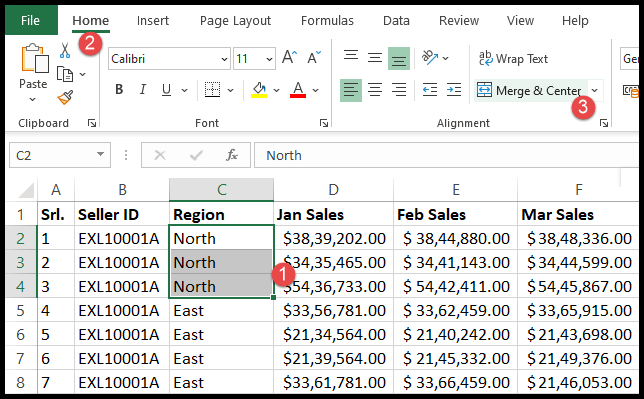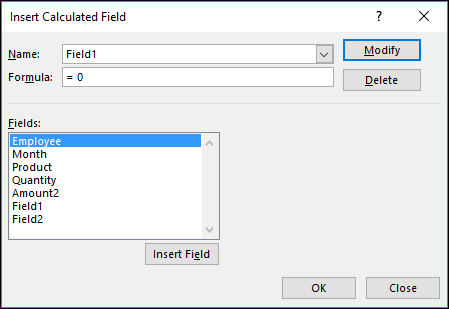Navigating the complex landscape of inventory management, businesses are constantly on the lookout for tools that can streamline their operations and enhance efficiency. The best inventory management software does more than just keep track of stock levels; it integrates aspects of sales, supply chain logistics, and analytics into a centralized platform. This suite of features assists retailers, wholesalers, and manufacturers in optimizing their inventory control, reducing costs, and improving customer satisfaction.
In the digital age, where the speed of business is ever-increasing, having reliable inventory management software is not just about convenience—it’s a necessity for staying competitive. The top contenders in the market offer an array of functionalities that cater to different business needs, such as multi-channel selling, order fulfillment, and real-time tracking of goods across the supply chain. Some software even includes tools for serial number tracking and batch control, critical for businesses that need to manage warranties and returns effectively.
The market is saturated with options, from versatile solutions that suit various business models to specialized software designed for specific industry requirements. It’s important for businesses to consider software that not only seamlessly integrates with their existing workflow but also provides scalability for future growth. Real-time analytics and reporting features are invaluable for making informed decisions, while ease of use remains a top priority for users who manage day-to-day operations.
Understanding Inventory Sales Software
Inventory sales software is like a superhero’s toolkit for businesses, keeping everything from products to orders in tip-top shape. It’s all about accuracy and efficiency, making sure that goods flow smoothly from shelves to customers.
Key Features
- Real-Time Inventory Tracking: Every item is monitored as it moves, ensuring the numbers are always up-to-date.
- Scalability: Whether a business is a startup or a sprawling enterprise, inventory management software grows with it.
- Flexibility: Adjusts to different sales channels, whether it’s online, brick-and-mortar, or multichannel retailing.
- Accurate Reporting: Generates precise reports for a clear picture of inventory health.
Benefits of Inventory Management
- Enhanced Efficiency: Automation reduces manual errors and speeds up operations.
- Better Decision Making: Real-time data empowers businesses to make informed choices fast.
Comparing Top Software Solutions
When selecting an inventory management solution, businesses weigh features such as ease of use, cost, and integration capabilities. Here’s how five popular systems stack up.
Zoho Inventory
Zoho Inventory stands out for businesses seeking a free option with scalability in mind. It provides stock management and multi-channel fulfillment across platforms such as Amazon, eBay, and Shopify. Starting as a cost-free service, Zoho Inventory supports growing businesses with an intuitive interface.
Shopify
Shopify, primarily known for its e-commerce capabilities, also includes inventory features vital for online retailers. Its strength lies in the seamless integration between sales channels and inventory tracking, simplifying the management process for store owners.
QuickBooks
QuickBooks offers a comprehensive suite for small to medium-sized businesses, integrating inventory management within its extensive accounting software. QuickBooks Online facilitates real-time inventory tracking and order management, streamlining operations with financial insights.
InFlow
InFlow is suitable for businesses looking for detailed inventory item categorization and supply chain management. With a pricing spectrum from $89 to $439 per month, it caters to various business sizes and offers features like barcode scanning and automatic reorder points.
Fishbowl Inventory
Fishbowl Inventory is a robust option for businesses requiring advanced inventory management capabilities. Users can enjoy features like part tracking, work order management, and manufacturing inventory control, which integrate seamlessly with QuickBooks for accounting efficiency.
Integration and Ecosystem
Proper integration of various systems and platforms is crucial for managing inventory effectively. The ecosystem of software, encompassing e-commerce, ERP systems, accounting, and CRM, plays a big role in inventory optimization.
E-Commerce Platforms
Integrations with e-commerce platforms like Amazon, eBay, and Shopify are essential for retailers operating across multiple sales channels. Zoho Inventory, for instance, excels in handling multi-channel order fulfillment, connecting seamlessly with these popular online marketplaces.
ERP Systems
ERP (Enterprise Resource Planning) systems such as NetSuite WMS support mid-sized and large businesses by unifying core processes. These integrations are vital for businesses looking for comprehensive solutions that manage everything from inventory to human resources.
Accounting Integrations
Accurate inventory tracking ties directly into accounting. Software that embeds integrations with QuickBooks Desktop or Xero streamlines financial reporting. An integration simplifies the reconciliation of stock levels and monetary flow.
CRM and Marketing
Customer Relationship Management (CRM) systems and marketing tools are often integrated with inventory management software. This brings customer data into the inventory management process, aiding in sales forecasting and customer service. Integrations with CRM systems help businesses maintain a clear view of both inventory levels and customer interactions.
Advanced Features for Sales Enhancement
To stay ahead in the competitive sales landscape, it’s crucial for businesses to leverage advanced inventory management software capabilities. From accurate forecasting to seamless integration with online sales platforms, these features are game-changers.
Forecasting and Demand Planning
Software with forecasting and demand planning capabilities allows businesses to predict future sales with greater accuracy. They can anticipate demands, adjust stock levels, and allocate resources more efficiently. This predictive power, often fueled by historical sales data and market trends, helps in maintaining the right inventory level—reducing the risks of overstocking or stockouts.
Barcode Scanning and Inventory Control
Effective barcode scanning and inventory control mechanisms streamline inventory management. They provide businesses with reliable and real-time updates on stock movements. Barcode scanning reduces human errors and expedites the inventory tracking process, from receiving shipments to processing sales.
- Key benefits include:
- Quick product identification and tracking
- Simplified stocktaking processes
- Real-time inventory data access
Mobile and Online Store Integration
Mobile apps and online store integrations extend the reach of inventory management systems beyond the confines of brick-and-mortar locations. They enable businesses to manage sales, stock, and customer data across various channels effortlessly.
- Integration features may cover:
- Syncing product listings with online sales channels like Amazon, eBay, and Shopify
- Providing mobile point of sale (POS) functionalities for on-the-go sales transactions
Unlocking these advanced features equips retailers with the tools they need to fine-tune their sales strategies and enhance customer satisfaction.
Cost and Investment Insights
When eyeing inventory management software, one’s gaze naturally gravitates toward the price tag and the underlying cost structure. It’s not just about the initial cost; it’s about understanding the long-term investment and how it affects a business’s bottom line.
Pricing Structure Analysis
Different inventory management software offers various pricing models to accommodate the diverse needs of businesses. Small businesses usually benefit from tiered pricing systems that scale with their growth.
-
Monthly Subscriptions: A commonplace strategy where costs can range from as little as free to several hundred dollars per month. For instance, Cin7’s advanced offerings start at $349/month, while Ordoro provides an entry-level plan at no cost.
-
Annual Subscriptions: Companies often incentivize annual commitments with discounts. For example, inFlow’s pricing can drop to $89/month when billed annually, lightening the long-term financial load.
Each tier typically escalates in functionality, allowing businesses to align their spending with actual usage and need, rather than over-investing from the get-go.
Understanding Total Cost of Ownership
The total cost of owning inventory management software goes beyond subscription fees. Potential purchasers should factor in additional expenses such as:
- Setup Costs: They can include initial training or integration with existing systems.
- Updates and Maintenance: While some providers like Zoho offer a free inventory system, others may charge for updates.
Also, thorny issues like downtime, which can gnaw at profits, and the value of customer support, shouldn’t be dismissed. For profit-conscious businesses, snagging software that scales without exorbitant incremental costs is key. They should scout for plans that won’t penalize their growth, especially when every dollar counts.
Software for Specific Industries
Choosing the right inventory software often depends on the industry. Different sectors have unique requirements that demand specialized solutions to streamline their inventory management.
Retail and Commerce Solutions
In retail, inventory software must be agile and integrated with multiple sales channels. For ecommerce and brick-and-mortar stores, platforms like Zoho Inventory are ideal as they manage stock across Amazon, eBay, Shopify, and physical locations. Square is often favored by small retail shops for its user-friendly interface and efficient sale tracking.
Production and Manufacturing Software
Manufacturing ERP (Enterprise Resource Planning) systems are crucial for those in the production sphere. Software in this category needs to handle not just inventory but also the intricacies of production processes. Systems like Cin7 provide modules for orders, manufacturing workflows, and supply chain management, making them a comprehensive choice for manufacturers, including those in electronics and fashion and apparel industries.
Food Industry Specialized Software
The food industry requires inventory management systems that can track expiry dates and comply with food safety regulations. Specialized software addresses these needs by offering batch tracking and temperature monitoring features, which are critical for businesses handling perishable goods. These solutions are indispensable for ensuring that the quality and safety of food products are maintained throughout the supply chain.
Inventory Management in Action
When it comes to keeping a tight ship in warehouse operations, the right inventory management software can make all the difference. They’re adept at juggling the complexities of purchase orders, tying together various sales channels, and ensuring that order management is a breeze.
Case Studies and Success Stories
Businesses have transformed their inventory game by leveraging advanced software solutions. For instance, Cin7 has been hailed as a game-changer for companies looking for a comprehensive suite of tools that cover warehousing, production, and distribution. They’ve reported streamlined logistics, thanks to the software’s ability to adapt to their specific needs.
Retailers using Zoho Inventory revel in the benefit of an integrated system that connects seamlessly with sales channels like Amazon, eBay, and Shopify. They see a clear uptick in efficiency, managing their orders across platforms without a hitch. The free version of Zoho has been notably beneficial for small businesses, getting them off the ground with robust stock management tools that don’t break the bank.
Best Practices in Inventory Management
The best practices in inventory management underscore the importance of real-time data and analytics. Keeping tabs on every item as it moves through the warehouse, onto distribution, and finally to the customer is key.
- Keeping Accurate Inventory Counts: A critical step in avoiding overstocking or stockouts.
- Managing Purchase Orders Effectively: Streamlining this process ensures that the warehouse isn’t caught off guard by sudden demand spikes.
- Integrating Sales Channels: Consolidating sales data from diverse channels provides a cohesive view of inventory health.
Sophisticated inventory management systems emphasize the importance of adaptability, letting businesses scale operations up or down as needed. The goal is always clear: keep the wheels turning smoothly, ensuring that the path from production to customer is as efficient as it gets.
Support and Training for Users
Choosing the right inventory management software comes with the need for robust support and training options. Users often benefit from comprehensive customer support services and detailed training resources to effectively manage and maintain their inventory systems.
Customer Support Services
When users encounter issues or have questions, they rely on the customer support provided by the software company. Good inventory management software typically offers a variety of contact methods, including:
- Email: Users can send detailed queries and usually receive a response within a business day.
- Phone: For immediate assistance, phone support can connect users with a representative for real-time problem-solving.
- Live Chat: Some software options provide live chat for quick, convenient support directly through the software’s user-friendly interface.
Training Resources and Documentation
Effective software should also provide users with ample training materials to help them get the most out of the system. Training resources often include:
- Video Tutorials: Short, topic-specific videos that guide users through features and processes.
- Documentation: Comprehensive guides and articles that detail every aspect of the software, from basic operations to advanced features like live syncing and mobile accessibility.
- Webinars and Online Courses: Structured learning paths that users can follow to become proficient in using the software across various devices and platforms.
Training and support are critical for users to quickly resolve issues and optimize their inventory management practices.
Security and Compliance Standards
When selecting inventory sales software, security and compliance standards are crucial. They safeguard sensitive data from unauthorized access and ensure adherence to regulations.
SOC 2 Compliance is a key standard for Software as a Service (SaaS) providers. It’s designed to ensure a robust system for managing customer data securely. Compliance software often automates the governance process, thereby reducing human error risks.
A checklist for ideal software might include:
- Data Encryption: Both at rest and in transit.
- User Access Controls: Roles and permissions.
- Audit Trails: To track data changes and access.
| Feature | Importance |
|---|---|
| Data Encryption | High |
| Access Controls | Critical |
| Audit Trails | Necessary |
Companies must ensure that their chosen platform can handle the regulatory landscape specific to their industry. For example, healthcare providers require software compliant with HIPAA, while financial services might look for GLBA compliance.
Automated Security Measures are increasingly popular, helping businesses map out compliance requirements and automatically enforce policies.
In summary, companies should prioritize inventory sales software that:
- Upholds industry regulations.
- Protects against data breaches.
- Provides automated compliance solutions.
Keeping these standards in mind will help maintain the integrity of a business’s operations and the trust of its customers.
Frequently Asked Questions
Selecting the right inventory management software can bolster a small business’s efficiency and accuracy in tracking products. From free tools to systems designed for growth, these FAQs cover essential bases for making an informed decision.
What’s the top inventory management software for small businesses?
For small businesses, software like inFlow is often recommended because it offers different tiers appropriate for various business sizes and scales.
Can you recommend any free tools for inventory and sales tracking?
Ordoro offers a free plan that is suitable for businesses just starting out, allowing them to get a handle on basic inventory and sales tracking needs.
What are the top-rated inventory software solutions for growing companies?
Katana is frequently mentioned as ideal for growing businesses thanks to its scalability and focus on manufacturing and inventory control.
How do I choose an inventory system that’s easy to use and integrates with sales?
Businesses should look for inventory systems with user-friendly interfaces like Zoho Inventory, which also offers robust integration options with sales platforms.
Are there any inventory management platforms designed specifically for small businesses?
Yes, platforms like Cin7 are designed with the needs of small businesses in mind, providing tools that help streamline operations without overwhelming users.
Which inventory tracking solutions do experts typically recommend?
Experts often recommend Fishbowl Inventory for its comprehensive features and its capability to integrate with QuickBooks, making it a favorite for businesses looking for robust solutions.


